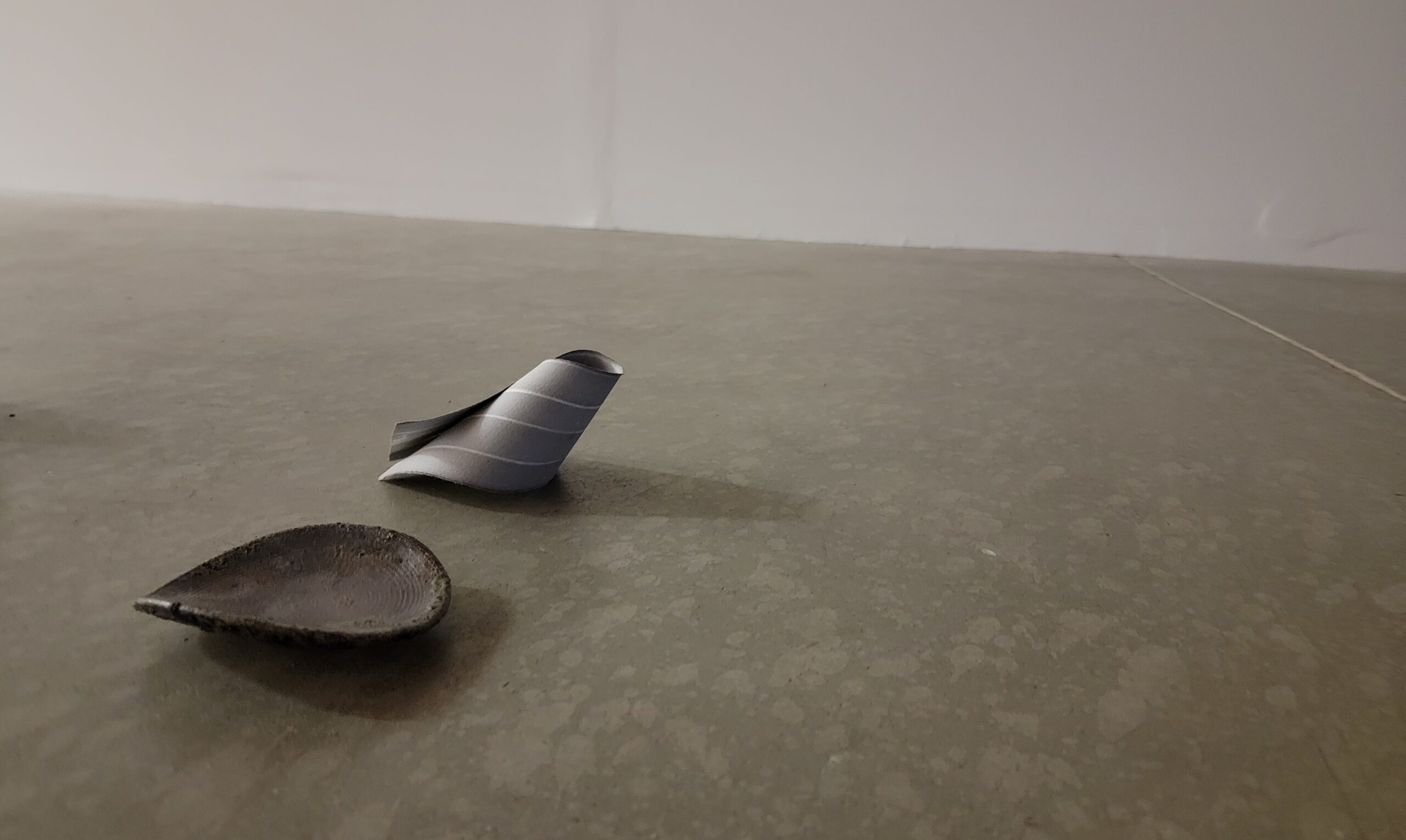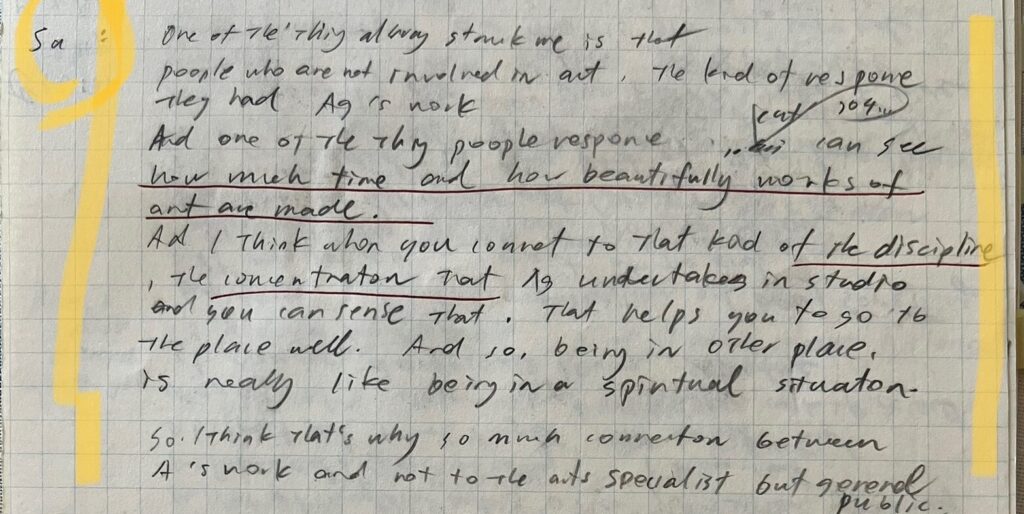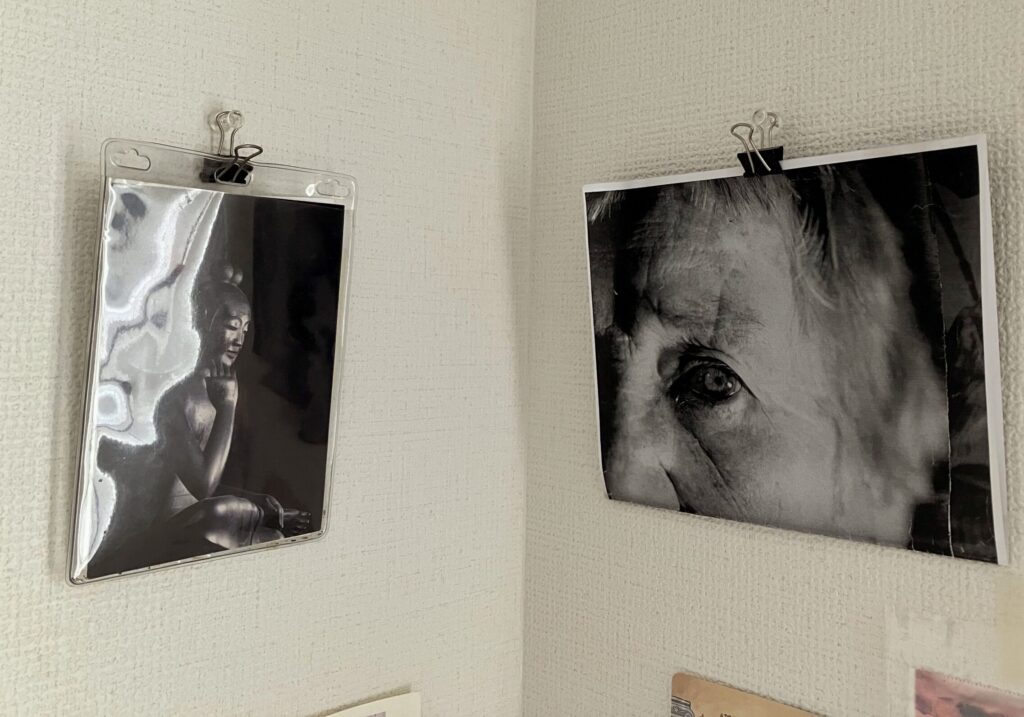How can we consider her, Agnes Martin, as an artist? アグネスはどのような芸術家だと言えるだろうか?My thoughts on this enquiry, at this point, are expressed in my answers to a question kindly thrown by Michael. 現時点での私の見解は、マイケルが投げかけてくれた問いへの答えに記されている。Michael’s gaze in his response is both warm and rigorous. Undoubtedly, ‘able to see freely’. 応答する彼の眼差しは温かくそして厳しく…、まさに「観自在」。
Utako:
I would answer YES to “Do you think this ‘transformed’ aspect of Agnes’ persona or psychology relates to her position at the *edge refer to in your notes(1)?”.
「アグネスのペルソナや心理における『変容』という側面は、あなたがメモ(1)のなかで言及した、彼女の立場の『周縁性』と関係があると思いますか?」という貴方の問いに、私はイエスと答えます。
The panelist (‘S’), who spoke about ‘the *edge’ (Agnes’ being part of both the art historical tradition and an outsider to it), previously enunciated in the symposium something like that. ‘S’, Suzanne Delehanty, who curated Agnes’ first retrospective in Philadelphia, said: “….and I think when you connect to that kind of discipline, the concentration that Agnes undertakes in studio and you can sense that. That helps you to go to the place [as] well. And so, being in [an] other place, in nearly like being a spiritual situation”.
パネリストSは、この「周縁性」(アグネスは美術史の伝統の一部であると同時に、アウトサイダーである)について発言した方ですが、おなじシンポジウムのなかで、同様のことを述べていました。S(スーザン・デラハンティ)は、フィラデルフィアで開催されたアグネスの初の回顧展の企画者で、「(略)そのような精神力と結びつけるなら、スタジオでアグネスがみせた集中力にも、それを感じとることができるでしょう。それにより、私たちもその場所に身をおくことになる。それは別の場所に身をおくことであり、スピリチュアルな状態に近い」と言いました。
My understanding is that this ‘spiritual situation’ is outside of the ‘modern’ art tradition – which was in those days, gendered and divided into high/low art. Perhaps it was a way to stay on the margin; she claimed that “I am not a woman. I am a door knob, leading a quiet existence” (1974) (2). It was when she was cultivating her own expression and ‘discipline’ by making her studio quiet and distant, yet open, to some degree. She later said, “Discipline is in having the mind open for inspiration” (1989)(3). In my understanding, inspiration is like ‘breath’, externally coming into and out of one’s bodily architecture. And some might consider it related to the idea of the spiritual.
この「スピリチュアルな状態」とは、ジェンダー化され、ハイ・アート/ロウ・アートに分かれていた「近代」美術の伝統の外部にある状態を指す、と私は理解しています。その周縁に身をおくための方法だったのかもしれません。アグネスは「私は女ではありません。私はひっそりと生きるドアノブです」と言いました(1974年)(2)。これは、彼女がアトリエを静謐で孤独な、それでいてある程度オープンな空間として維持しつつ、自分なりの表現と「自制心」を育んでいた頃のことです。のちに、彼女は「自制心とはインスピレーションのために心を開くことだ」と言いました(1989年)(3)。私の理解では、インスピレーションとは「息」のようなもので、人間の身体の構造に外から取り込まれたり、出ていったりするものです。そして、それをスピリチュアルなものをめぐる考えと関連づける人もいるでしょう。
In thinking about this, I am reminded of an image of the Buddhist Statue of ‘Hanka Shiyui Miroku-Bosastu’. I studied the statue and its art-historical significance to both east and western thought a while ago before studying Agnes more deeply.
そのことを考えていると、「半跏思惟弥勒菩薩」という仏像のイメージを連想します。アグネスを深く研究するようになる前のことですが、以前、この仏像について、また東西の思想におけるその美術史的重要性について勉強しました。
‘Bosatsu’ transcends sexual difference, and this particular statue, made in ancient Japan in the 7th Century, is supposed to have ‘transformed’ from the external world to the human world, through the tremendous ‘suffering’ process on behalf of human kind for salvation (4).
「菩薩」は性差を超越した存在で、7世紀の古代日本で作られたこの仏像は、人間の身代わりに途方もない「苦難」の過程を経験し、救済をもたらすべく、外界から人間界の存在へと「変容」したとされています (4)。
I do not see Agnes as a religious object nor a Buddhist statue. She is human (if not, then a Buffalo!). She cannot go to the other side like ‘Bosatsu’. But I agree that she might have stayed at the edge.
私は、アグネスを信仰対象や仏像とみなしているわけではありません。彼女は人間です(そうでないとすれば、バッファロー!)。彼女は「菩薩」のように別の世界の存在となることはできません。 でも、彼女が周縁的な存在だったという、あなたの言葉には同意します。
Micheal:
… Also, I was fascinated to read about Miroko-Bosatsu from your dissertation and in your email comments. I’m afraid I don’t have anything to add aside from the notion that it seems anything, including rigorously poetic work, could be a bosastu, i.e. a teaching, a student.
… それから、弥勒菩薩について、論文やメールに書いてくれた内容、興味深く読みました。私から付け加えることはないけど、あらゆるものが菩薩みたいだって言えそうな気がします。素晴らしく詩的な作品もそうだし、ということは、何らかの教えや学ぶ人だって。
And Delahanty’s reflections on Agnes Martin and discipline was very cool to read. To have an open mind for inspiration seems like such a vulnerable state in that it requires a certain suspension of self understanding in order to receive, to perceive in a preverbal way. At least, that’s what occurs to me now. Maybe that’s why so much of her work feels so completely coherent to me.
アグネス・マーティンの精神力についてのデラハンティの見解はとってもクールだね。インスピレーションを得るために、心をオープンにするというのは、とても傷つきやすい状態なんじゃないかな。インスピレーションを得るため、前言語的なやり方で知覚すると、自己についての理解が一時的に揺らぐことになるから。少なくとも、私はいまそんな状態にある。彼女の作品の多くが「完全に」辻褄の合ったものに感じられるのは、そのせいかもしれない。
I think you have an exciting mind, Utako. I don’t romanticize this because I can imagine it can be burdensome to delve only to find yourself either enthralled by your subject or to feel unsure whether what you’re seeing/thinking has any reality at all.
詩子の発想は素晴らしいと思う。でも、私は必要以上にロマンチックに考えないようにしようと思う。深く掘り下げることで、テーマの虜になったり、自分の見ている/考えている内容にそもそもリアリティがあるのか、分からなくなったりすると厄介かもしれないから。
(footnote)
- My transcription of the video recording, An educational symposium honoring Agnes Martin on the occasion of her 90th birthday, organized by the University of New Mexico’s Harwood Museum ofArt (Taos, New Mexico, March 22 – 24, 2002), sourced from Harwood Museum of Art Archives
- Jill Johnson, “Agnes Matin: Surrender & Solitude” in Gullibles Travels, 1974, Links Books (NY., London), sourced from New Mexico Museum of Art Archives
- “Agnes Martin: Beauty is the Mystery of Life” (Martin’s lecture note and the transcription of Q&A), in El Palacio, fall/winter 1989, Vol.95 (Santa Fe, The New Mexico Museum Foundation), sourced from Pace Gallery Research & Archives
- The Untranslatable, a Poetic Place, my doctorate dissertation submitted to the University of Melbourne, 2017



